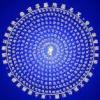Search the Community
Showing results for tags 'Mahamudra'.
Found 6 results
-
Hi friends, a question, with some preface: I started to develop an interest in Dzogchen a little more than a year ago. I'd been doing silent, objectless meditation for some time, and being without any teacher I was starting to worry if I was falling into what Chan masters sometimes refer to as a "cavern with ghosts," i.e. oblivion without illumination. I realized that Dzogchen offered more of a structure than I was able to find in books of Zen, Taoist medication (Golden Flower) or even apophatic prayer (Plotinus, Dionysus, Eckart, etc). Now I don't want to get into a long debate about whether/ to what degree Dzogchen leads to the same thing as the other traditions (I've seen enough of that on DW). Suffice it to say that I'm reasonably confident that it leads to where I want to go, being, according to its own view, not only the essence of Buddhadharma but also the essence of all religion/spiritual traditions. I had and have no interest in going through ngondro or otherwise getting involved in the structures and hierarchies of Tibetan Buddhism. I really just want a "nondual" contemplative practice that is detailed enough to provide decent guidelines for practice, but free from religious dogma. This is why I was happy to find out about ChNNR, who gave webcasts of the Direct Introduction, but didn't require formal "conversion" to Buddhism or samathas other than to maintain the View. And he was reportedly accessible without expecting or desiring "worshippers." Unfortunately, I was not aware of him until after his very last webcasts and before he passed away (sometime in July or August 2018). I'm not aware that the Dzogchen Community has appointed anyone to take on his role, and in any case my feelings towards that organization are somewhat ambivalent. With ChNNR gone, I'm uninclined to get involved with it. So the question is, are there any other Dzogchen (or Mahamudra) teachers who follow a similar perspective to ChNNR in offering DI via webcast and enabling practitioners to just follow the teachings without formal conversion/memberships/vows? Does anyone have recommendations? At this point I'm almost inclined to just get started and throw myself on the mercy of Heaven (as it were) as I feel this is rather holding me back. I would also be interested in hearing about alternative pathways via other traditions that I may have missed (in Taoism, for interest), i.e. accessible nondual meditative traditions or teachers that are not dependent upon taking a confessional perspective, cumbrous rules or arbitrary obedience, but which aim to lead the student to the essence of all traditions. Many thanks I'm advance!
- 36 replies
-
- 3
-

-
- nondual traditions
- mahamudra
-
(and 2 more)
Tagged with:
-
Hello, This is a summary of "How to" notes that I have compiled from various books/sources on meditation. Most specifically the "Natural State" or "Ordinary Mind" form the Tibetan Mahamudra practice. While it is based on the Kagyu School of Tibetan Buddhism it is also identical to the Japanese Zen tradition of Soto where the state of Shikantaza is practiced. Shikantaza is also known as "Serene Reflection" or "Silent Illumination" from the Caodong (Chinese version of soto zen) School. Essentially Mahamudra and Shikantaza are paths of enlightenment in and of themselves. Enlightened states of non-attaining, and non-thought, uncontrived states of mind. Sometimes they are known as the culmination of Shamatha and Vispashyana, but from the Buddhist world they are their own entity and beast. As Tibetans refer to this state as the The true nature of the mind, original face, natural state, etc. These act as mindfulness guides that can be implemented in sitting, walking, or activity through out the day to help stabilize one in the natural state of Mahamudra or Shikantaza: Attention Revolution (Alan Wallace) Let your mind be like the sky The sky never reacts It doesn't stop anything from moving through it It doesn't hold onto anything that's present nor does it control anything Whatever thoughts or mental images arise, you simply observe them Without distraction and without grasping Without being either attracted or repulsed by them Just let them be Instead of letting thoughts go, you let them be Don't prefer one kind of thought to another Don't even prefer the absence of thoughts to the presence of thoughts They are not the problem Being distracted by and grasping onto thoughts is the problem Let the space of awareness remain as expansive as possible When thoughts arise, let them play out their course Regardless of their nature or duration It is crucial to observe the movement of thoughts without intervention Mahamudra Teaching (Garchen Rinpoche) Stay just with your thought as it rises, so as to not give it form, or side with the thought as good, bad, or any reference. When mindful of giving form to thought or mental happening, just let your mind relax. Don't investigate further (This is to not attach to it). We establish this view of "nothing to see, nothing to objectify, nothing to project. We imbue this view with certainty Don't get discouraged Simply do not follow after the thoughts Don't make any commentary on the thought, let it rise then dissolve As any thought arises, you just see it Any conceptual thought that arises has no any essence No essence at all There is nothing to follow Not rejecting the suffering, not attaching to the happiness Whatever comes let it come, just sustain the Mahamudra Clarifying the Natural State: Dakpo Tashi Namgyal Undistractedly maintain the natural state of your mind with a naturally aware presence, no matter how it is or what is perceived or felt. Continue the practice with unbound ease without pinpointing whatever is experienced Take care not to stray into intellectual analysis, thoughtless calm, savoring a meditative experience or hankering after the ensuing certainty. Do not entertain any ambitions about what should or should not be cultivated by meditating. Do not be happy when calm or unhappy when thoughts move; rather, relax your attention loosely. Do not inhibit one thing while promoting another. Leave your attention as it naturally is – relaxed and free. Zazen Instructions (Global soto-zen.net) Do not concentrate on any particular object or control your thought. When various thoughts arise in your mind, do not become caught up by them or struggle with them; Neither pursue nor try to escape from them. Just leave your thoughts alone, allowing them to come up and go away freely. The essential thing in doing zazen is to awaken from distraction and dullness and return to the right posture moment by moment. Rules for Meditation from Dogen (FUKANZAZENGI) Cut all ties, give up everything Think of neither good nor evil, consider neither right nor wrong Control mind function, will, consciousness, memory, perception and understanding You must not strive thus to become Buddha
-
If you want to know and "practice" original Dzogchen as it was meant to be presented, please purchase all of Chris's books as displayed on his Amazon page. These are all new first time translations of Dzogchen's most profound and earliest teachings. What you will read is quite shocking and revelatory as the Dzogchen view is brought into clear focus. It cuts to shreds any notion of a "gradual path" or need for practice and effort. Chris has captured the essence in his translations of what Dzogchen was intended to convey; immediate enlightenment and release! May all beings prosper! http://www.amazon.com/Christopher-Wilkinson/e/B00KINMI22
-

Meditation On The Nature Of Thoughts/Appearances
Simple_Jack posted a topic in Buddhist Textual Studies
This is a collection of doha's and excerpts from meditation manuals/articles that I particularly like. Keep in mind, kun gzhi rnam par shes pa/alayavijnana/all-basis consciousness, in Mahamudra, is distinguished from the kun gzhi/alaya/all-basis, in that the former is an impure afflicted consciousness. Kun gzhi/alaya is individual or personal, not universal or shared, yet not a 'oneness' nor a 'manyness', and is the inseparability of clarity and emptiness of the [individual's] mind. What's being referred to as mind, in these dohas and meditation instructions, is none other than the kun gzhi/alaya. http://www.hhthesakyatrizin.org/pdfs/melody_3.pdf Virupa's Treasury of Doha's Homage to Sri Vajrasattva Homage to Blessed Nairatma E ma ho! The mahamudra is completely pure by nature like space. Since the reality of the demonstrated object does not exist, it cannot be expressed through the medium of conventional words, the essence without proliferation by nature is free from all dependent phenomena, cannot be investigated or examined, free from demonstrative examples, also not abiding in freedom from examples, beyond the domain of the mind, not eternal, not annihilated, not samsara or nirvana, not apparent, not empty, not real, not unreal, not non-arising, not the original dharmata, and also not beyond mind, also not non-being because being and non-being cannot be expressed with the mind, not connected with any dualistic phenomena, originally homogenous. Even the explanation of the activities of defining the essence, equivalent with the fallacy of those false horns of a rabbit being sharp or dull, all phenomena are not different from that characterization. The relative phenomena of the world however they appear are without essence, mere names, mere sounds, mere designations, not the slightest bit of difference between names and meanings exists, innate from the beginning, not to be sought elsewhere, the nature of the mind, without a name, mahamudra free from proliferation, it is equivalent with the nature of space, without a name from the beginning, non-arisen by nature, free from the proliferation of signs, all-pervading, unmoving and unchanging like space, empty throughout all time and always selfless, not the characteristic of concept, like a mirage of a river, not bound, not liberated, having never moved from the original state. All sentient beings are emanations of mahamudra, the essence of those emanations is the forever non-arising dharmadhatu, also all characteristics of dualistic appearances, happiness, suffering and so on, are the play of mahamudra, the original dharmata. Because there is no truth and nothing on which to rely in play itself, reality never transcends the seal of emptiness. Some are completely tortured with empowerment rites, some always count their rosary saying hum phat! some consume shit, piss, blood, semen and meat, some meditate the yoga of nadi and vayu, but all are deluded. E ma ho! Having been connected with a sublime Guru, one should realize as follows: because there is some kind of delusion, true realization does not exist, free from any extremes of partiality or bias since there is nothing to realize and no realization, the homogenous original state is neither with nor without [extremes]. If one realizes in this way there is definitely no-one else to ask. Since diversity appears as the dharmakaya, a mind that accepts and rejects never arises. There is nothing to meditate or not meditate, and nothing is covered with characteristics, one should never depend on apparent and non-apparent objects, a mind with action and agent does not exist, free from all objects, a mind with hope and fear does not exist, turned away from all attachments, if one realizes the original reality shown by the Guru, the diversity of recollection and awareness automatically dissolves into the dharmadhatu, consciousness does not remain on an object, since one is free from all attachment and grasping, all phenomena are liberated in the uncontrived original state. If one is not attached to anything, free from the stain of pride and so on, devoted, totally connected with the sublime ones, and free from mental activity of any kind, there is no doubt one will be immaculate, because one is purified of a knower and objects of knowledge, the direct perception of dharmata will arise. If one has not realized original mahamudra, since one is always attached to everything because of the power of dualistic grasping, thoughts arise in the mind like the stream of the variety of blurred vision, not abiding in the non-erroneous ultimate, one cycles and wanders in samsara. Because of attachment and grasping to all the fame and offerings, and the arising of great hearing, reflection, and intellectual comprehension, good experience, siddhis, blessings, and the signs of power, the contrived path is ultimately a stain, the wise do not entrust their minds to them. If one is interested in those things and falls into the two extremes, because it is the root of cycling in the cycle of samsara, look, what is the mountain of the mind that is the root of everything? If one becomes free from the mind because it is not seen when looking, liberation is certain. Since the mind does not indicate “The dharmadhatu is this”, both meditation and an object of meditation do not exist in that, rest in the undistracted state without any concepts of existence and non-existence. If one intellectualizes emptiness, non-arising, beyond mind, freedom from extremes and so on in any way, not dwelling in actual reality, one will be very distracted. Rest in a relaxed state disregarding empty or not empty. Letting go in the state of independence without meditating or not-meditating, be just like a zombie, without a mind that accepts or rejects. If one dwells in my state through knowing reality as it is, the traces of the characteristics of dualistic appearances will be quickly destroyed. If one is distracted by characteristics without dwelling in the state of realization, one will not be able to avert the traces of the characteristics of dualistic appearances, though it seems a particle is in the eye of one with ophthalmia, the ophthalmic appearance cannot be repaired without curing the eye disease. Intellectualizing reality, attachment to meditation experience, cultivating and meditating on the actual true state are causes of deviation. Because attachment and aversion arose towards conducive conditions, one is bound. All negative disharmonious conditions are sublime siddhis, since negative conditions intensify the yogin’s experience, since one understands the true state of negative conditions without avoiding them, train in them, maintain that, and practice until coming to the conclusion of experience and realization, just as a good horse is encouraged by a quirt. If yogis with good experience lack the companion of conduct, as that is not possessed, it is like people without feet. Train in the actual ultimate real state free from attachment, giving up nothing, accomplishing nothing, attached to nothing, purifying nothing, rejecting nothing, the best of the very best behavior is whatever feels good to one’s body. Though relatively, the Buddhas have the great confidence of a dead body, they diligently do whatever possible without abandoning the great mass of sentient beings. Though fearless, without fearful thoughts towards samsara, refrain from even the slightest wrong action. Though phenomena are realized to be empty like space, free from an origin, give up attachment and aversion having destroyed all strong attachment. Though one realizes the meaning of the great transparent Dharmata free from extremes, while one has not attained stability keep one’s experience and realization secret from others. Though one realizes that ultimately both self and other do not exist, relatively, think on the great benefit of migrating beings. Though one has the confidence that does not depend on the guidance of others, place the very kind Guru on the crown of one’s head. The one with attachment and grasping will debate everyone, contrary conduct not in conformity with tradition is a deviation. Since there is no object of perception and no perceiver, difference is liberated in its own state. Since the experiencer is destroyed, one is free from all effort and practice. Since the result to attain is destroyed, one is liberated from all hope and fear. Having totally uprooted I and mine, one is victorious in the war with Mara. Since realism is destroyed in its own state, one is liberated from samsara and nirvana. Since Rigpa is pure in the basis, it is called “Perfect Buddhahood.” Since phenomena and mind are exhausted in the state of exhaustion, therefore it is explained as “nirvana”, uncontrived, unchanging, totally liberated from everything to be given up or to attain. E ma ho! That great profound term “mahamudra”, whatever its basis of designation is, also has the label “empty”; as moments are empty by nature, who realizes selflessness? There is no realizer, just a name, a term, a label. Also that is not perfect, a projection of disciples*, also in disciples there is no self, similar with illusions and emanations “Mahamudra” is a mental imputation of the childish. “Delusion” and “non-delusion” are mere names, mere labels, who is the person to feel or be aware of delusion? If not even an iota of the result, nirvana, exists, and is not perceived, “liberation and non-liberation” is an adventitious reification, Nothing exists in peaceful and pure space, so what is the path of liberation? “Ultimate and relative” are also just emphatic labels, but the two truths don’t exist in the dharmadhatu, the dharmadhatu does not exist. The Treasury of Dohas composed by the lord of Yogis, Virupa, is complete. ( Doha: Song of Realization). Reproduced by kind permission of Lama Tseten Migmar *"disciples" are a reference to shravakas i.e. Hinayana.- 18 replies
-
- 3
-

-
- Mahamudra
- shamatha-vipashyana
-
(and 2 more)
Tagged with:
-
When I was last posting here, many of you were asking me when my book would be available to purchase. I have been busy with that project and it is now available at Amazon and on Kindle. I made an effort to present many of the pith instructions that I have received from mainly Dzogchen masters, Mahamudra masters and Zen masters, so that anyone could experience the "shift" into Enlightened Mind easily and in a relatively short time. The material is presented in generic language without the need to know anything about Buddhism nor the Tibetan teachings. To learn more about the book please visit my website: www.wayoflight.net Please share your feedback or comments! Jackson
-
Hello from Germany, I am not much of a forum writer but have enjoyed reading a lot of threads in this forum very much in the past so that I thought it might make sense to register one of these days. Thanks to all of you who create this relaxed yet often extremely well informed atmosphere here. My core practise is Soto Zen style Shikantaza, although I find it more than just intellectually stimulating to look deeper into the commonalities between Zen, Dzogchen and Mahamudra. Have a grea start to this new year. All the best, Winterson





